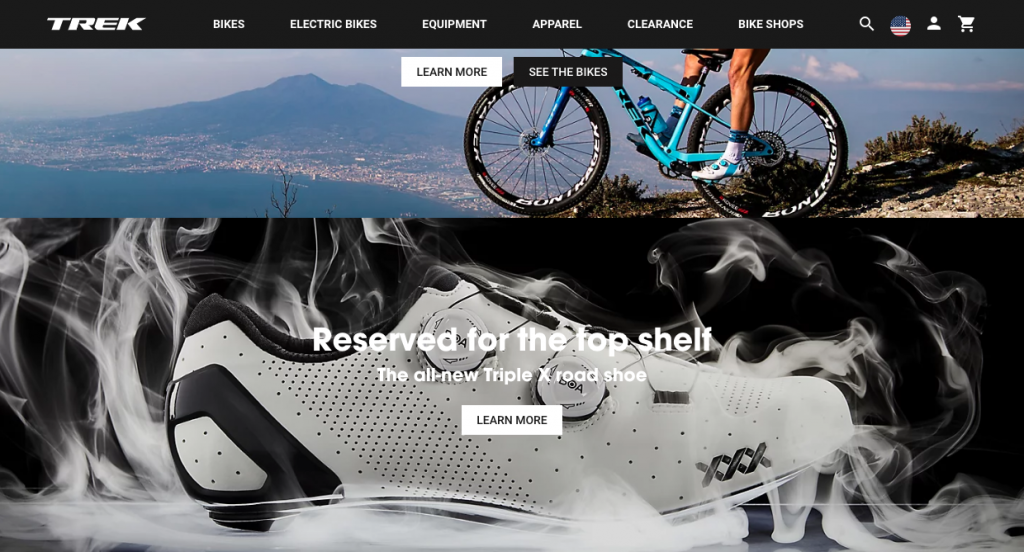
Trek Bicycle Corporation is a bicycle and cycling products manufacturer whose headquarters are located in Waterloo, Wisconsin.
Trek bicycles are marketed through 1,700 dealers across North America. They have distributors in more than 90 nations across the world with subsidiaries in Asia and Europe.
Only a small percentage of their bikes are manufactured in the USA while the remaining 99% are manufactured in other parts of the world including Germany, China, and the Netherlands.
Over the years, this manufacturer has distributed bikes under brand names like:
- Diamant Bikes
- Klein and LeMond Racing Cycles
- Trek, Villiger Bikes
- Gary Fisher
- Electra Bicycle Company
- Bontrager
Trek Bikes History
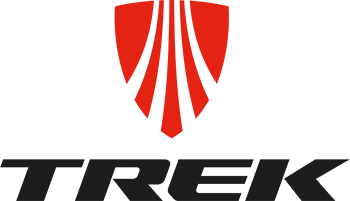 Trek is the Afrikaans word that stands for “Journey“. Taking a closer look at the history of Trek bicycles, one would agree that it has indeed been a journey.
Trek is the Afrikaans word that stands for “Journey“. Taking a closer look at the history of Trek bicycles, one would agree that it has indeed been a journey.
Over the last 42 years, this company has continually worked to refine and improve its products and persuaded the world to join in and take the journey towards better health and fitness.
The Early Years
- Trek’s story began in December 1975 in a barn when Dick Burke invested a sum of $25,000 to manufacture steel touring frames to battle those produced in Japan and Italy.
- Initially, the idea was to make the world’s best bikes but it was not until 1982 that they managed to actually manufacture their first complete bike as a company after acquiring more space and building a factory. In 1983, they made their first mountain bike.
- Later in 1984, they launched aftermarket parts and accessories line, Trek Components Group (TCG).
- The period between 1985 and 1991 could be described as the technology frontier for Trek. In 1985, they borrowed from aircraft and other bike companies’ technology and introduced their first bonded aluminum bike frame in 2000.
- Later in 1986 Trek followed up the success of 2000 with a 3-tube carbon composite model, The Trek 2500.
This was Trek’s entry into the world of carbon fiber. That same year, to keep up with rapidly growing sales, they added another 75,000 sq ft (7,000 m2) of manufacturing space to its Waterloo headquarters.
- In 1988, Trek bikes introduced “Trek Wear,” which strongly indicated the company’s entry into the cycling apparel business. A year later, Trek ventured into foreign markets, opening subsidiary offices in the UK and in Germany.
That same year Trek introduced its Jazz brand of bicycles, a collection of entry-level and kids’ bikes designed by Trek but manufactured in Taiwan. Jazz bicycles were discontinued in 1993.
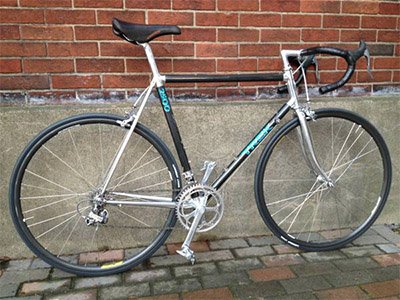
The famous Trek 2500
- In 1992, They launched their first bikes built with a full-carbon frame, the 5500 and 5200 which featured Optimum Compaction Low Void (OCLV) frames. These went on to become the world’s lightest production bikes with a frame weighing around 1.11kg.
The company further expanded its space to accommodate the new OCLV manufacturing facility.
- In 1992, Trek also introduced their first full-suspension mountain bike, the 900 series which featured the T3C suspension system. In 1993, Trek also acquired Gary Fisher Mountain Bikes, named after Gary Fisher, one of the inventors of the mountain bike and one of the most popular names in off-road cycling.
Fisher had founded Gary Fisher Mountain Bikes in 1983 and sold his company in 1991 to Taiwan’s Anlen company, remaining on as President.
The Later Years
- From there it has been all systems go for Trek bikes with a various event marking their success such as introducing a full suspension Y bike in 1995 and signing three-time Tour de France champion Greg LeMond to get LeMond Racing Cycles on its feet (1995), although the relationship with LeMond soured in 2008 as both sides alleged breach of contract.
In 2006 Trek launched the “1 World 2 Wheels” campaign. The idea was to encourage Americans to swap their cars for bikes on trips of two miles or less.
Today their mission is to “Help the world use the bicycle as a simple solution to complex problems” such as easing traffic congestion, improving health, seeing the world, and combating climate change.
They’ve cut their coal emissions to nil and parking spaces at their headquarters are allocated for carpoolers only.
Trek Bikes Model Range
Today, Trek produces everything from high-end road, mountain, and triathlon bikes to hybrid, comfort, cruiser, and kids’ bikes. These products are available at a range of prices; the high-performance bikes will require you to dig deeper into your pocket while other bikes are more affordable.
They have also designed bikes and accessories to fit female riders since 2000 and they have a custom bike program called Project One, where customers can choose their own paint scheme and component mix.
Trek Mountain Bikes
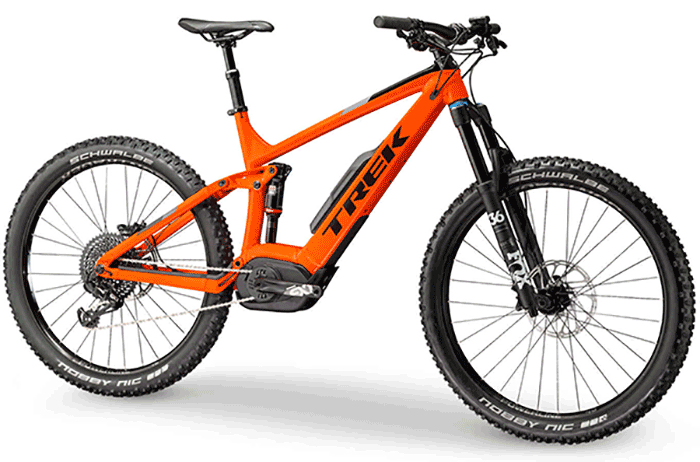
Trek’s mountain bikes are made for off-road adventure, fun, and competition. Among their extensive range of 13 models, you can find something to take on any off-road conditions and fit every budget and rider preference.
They categorize the bikes into four groups: six cross-country models, four trail models, two downhill models, and one fat bike model. Additionally, there are electric mountain bikes which we discuss below.
Among the styles, you can find hardtails, full-suspension gravity bikes; 29″, 27.5″, mulleted wheels; aluminum, steel, and carbon frames; and a range of options from a beginner hardtail to a World Championship-winning beast.
The Trek Slash 9.9 XX1 enduro is the most expensive in the range, with an RRP of over $12,500; at the other end of their range, you have the sub-$500 steel-framed Trek 820 cross-country bike.
Interesting design technologies include Trek’s advanced OCLV Mountain Carbon frame and progressive sizing geometry. Other innovative MTB technologies from the company include Active Braking Pivot, IsoStrut shock—structural suspension, IsoSpeed frame-integrated suspension, and Mono Link adjustable geometry.
Trek Road Bikes
Trek is most widely recognized for its exceptional road bicycles, used by the World Tour team Trek Segafredo. Their road bikes are made for speed and efficiency on paved surfaces and gravel.
The company makes four distinct styles of road bikes in a range of builds:
- Aero (Madone) – Most popular racing bike for its aerodynamic tubing
- Lightweight all-rounder (Emonda) – The all-rounder lightweight climbing choice
- Endurance (Domane) – Built for comfort over long distances, with more relaxed, stable geometry and 38mm tire clearance
- Gravel – A fast off-roader with mounts for accessories and more tire clearance
You can find Trek road bikes with OCLV Carbon or Alpha Aluminum frames and SRAM or Shimano groupsets, depending on the price, which ranges from just over $1,000 for the cheapest Domane AL 2 to over $12,500 for the highest spec version of each.
Some exciting technologies used on Trek’s road bikes include invisible cabling design, IsoCore vibration dampening, and adjustable IsoSpeed micro-suspension.
Trek also mentions its aim to make each bike as effective as possible for both sexes, eliminating the need to find a women-specific model.
Trek Hybrid Bikes
Urban & Commuter / Fitness / Dual-sport / Recreation / Women’s / Kids’
Aluminum / Carbon
Trek hybrids are another hugely popular range of bikes among casual cyclists. These urban bikes are designed for versatility and benefit from the trickle-down of technology from the brand’s most innovative models. These hybrids include:
- FX 1-6 – This is a speedy fitness bike with a rigid fork
- Dual Sport 1-4 – A suspension fork hybrid built to tackle off-road terrain or function as a fully-equipped commuter
- Verve 1-3 – This is the ultimate comfortable hybrid bike with upright geometry and a low-step option available
These bikes come in various builds, including OCLV Carbon or Alpha Aluminum for the frames; step-over, step-thru, or low-step designs; IsoZone handlebar-integrated suspension, IsoSpeed Decoupler for endurance comfort, and mounts for a rack and fenders.
These bikes range from around $500 for the cheapest FX 1 to over $2,000 for the most expensive FX 6 Carbon and can be paired with various accessories to customize the bikes for your diverse urban or commuter needs.
Trek Electric Bikes
Each of Trek’s traditional bike ranges has a selection of e-bikes to complement it. This includes eHybrid, eMTB, and eRoad.
- Allant+ and Verve+ – Two fully equipped urban hybrid electric bikes, the Allant being the more sporty of the two
- E-Caliber, Rail, and Powerfly – Three full-suspension e-mountain bike options. The Rail is a long-travel MTB, and the E-caliber is a super lightweight XC bike
- Domane+ – Trek’s endurance road model goes electric with a lightweight and comfortable design that makes all-day riding a breeze
All of their bicycles use Bosch e-bike systems. Bosch produces some of the most innovative systems on the market with stylish integration, powerful mid-drive motors, and large-capacity batteries.
Trek uses the design technology found on their traditional bikes on many of their electric ranges, such as the IsoZone, IsoSpeed suspension, and premium frame engineering.
In addition, Trek’s subsidiary brand Electra has two comfort-focused “Recreation” electric models, the Townie Path Go and Attitude Go, and one hybrid, the Vale Go.
These e-bikes cover a wide price range, comparable to the standard bikes, beginning at around $1,600 for the entry-level Electra Townie up to $12,500 and $13,500 for the top-end road and MTB models.
FAQ
Where are Trek bikes made?
Trek bikes are made in China, Taiwan, the Netherlands, and Germany. Most of the manufacturing of Trek’s bikes and accessories takes place in China and Taiwan, as with most major bicycle brands. However, very select models are still produced at their Wisconsin factory.
Are Trek bikes good?
Yes, Trek bikes are good. They have worldwide recognition for high-quality, long-lasting bicycles across the whole price range. Trek also sponsors and manufactures bikes for the highest level of professional cycling, including Trek Segafredo road cycling and Trek Factory Racing mountain biking.
Where to buy Trek bikes?
You can buy Trek’s bikes at physical and online retailers worldwide, both online and in-store. Trek has its own physical stores and ambassador bike shops that mostly stock or only Trek bikes. You can find a list of all their online and physical retailers through the Trek.com website.
How much is a Trek bike?
A Trek bike can cost as little as $450 to $13,500. Each Trek model has various spec levels which change the price incrementally, meaning you can find a Trek bike in any price range. The company’s most popular models like the FX, Domane, and Powerfly have many pricing levels.
What size Trek bike do I need?
The size Trek bike you need depends on the model you buy, your body measurements, and preferences. Each of Trek’s products has a corresponding sizing chart on its web page to help you find the correct size. You can also use Trek’s network of Precision Fit technicians professional fit.
When did Trek stop making bikes in the USA?
Trek stopped making bikes in the USA in 2017. According to sources inside the company, they then moved the final 1% of US production to their overseas factories. However, 99% of the production was already in China, Taiwan, the Netherlands, and Germany.
How do I tell what year my Trek bike is?
You can tell what year your Trek bike is by finding the serial number on the underside of the bike’s frame, next to the bottom bracket. Then, contact your local Trek dealer or get in touch with the company’s customer service and provide them with this number to find out.
Who owns Trek bikes?
Trek Bikes is a privately owned company. Initially, the parent company was called Intrepid Corporation. However, Intrepid changed its name to Trek Bicycle Corporation in the 1990s and stopped its non-bicycle-related business due to the incredible success of the biking giant.

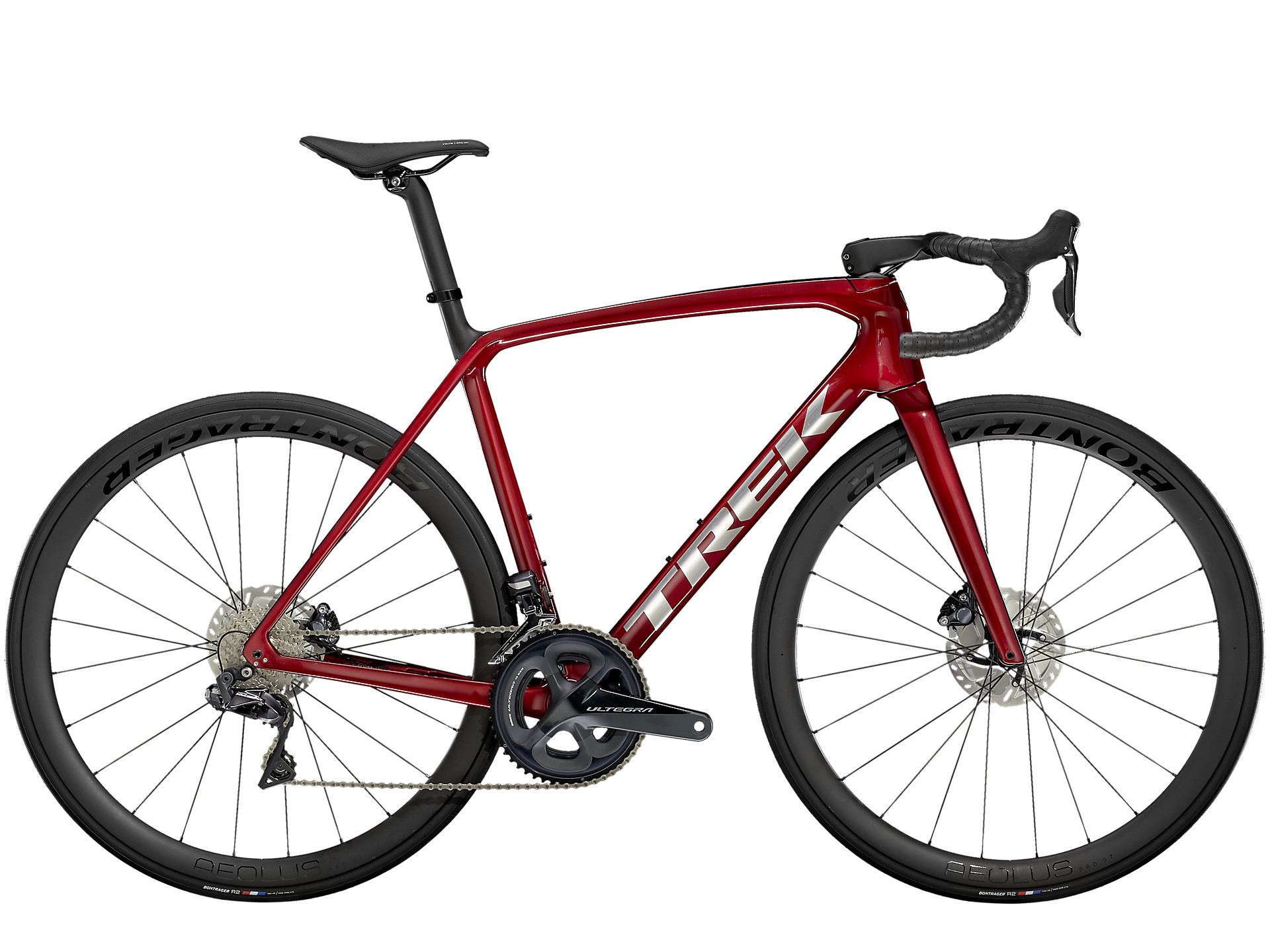
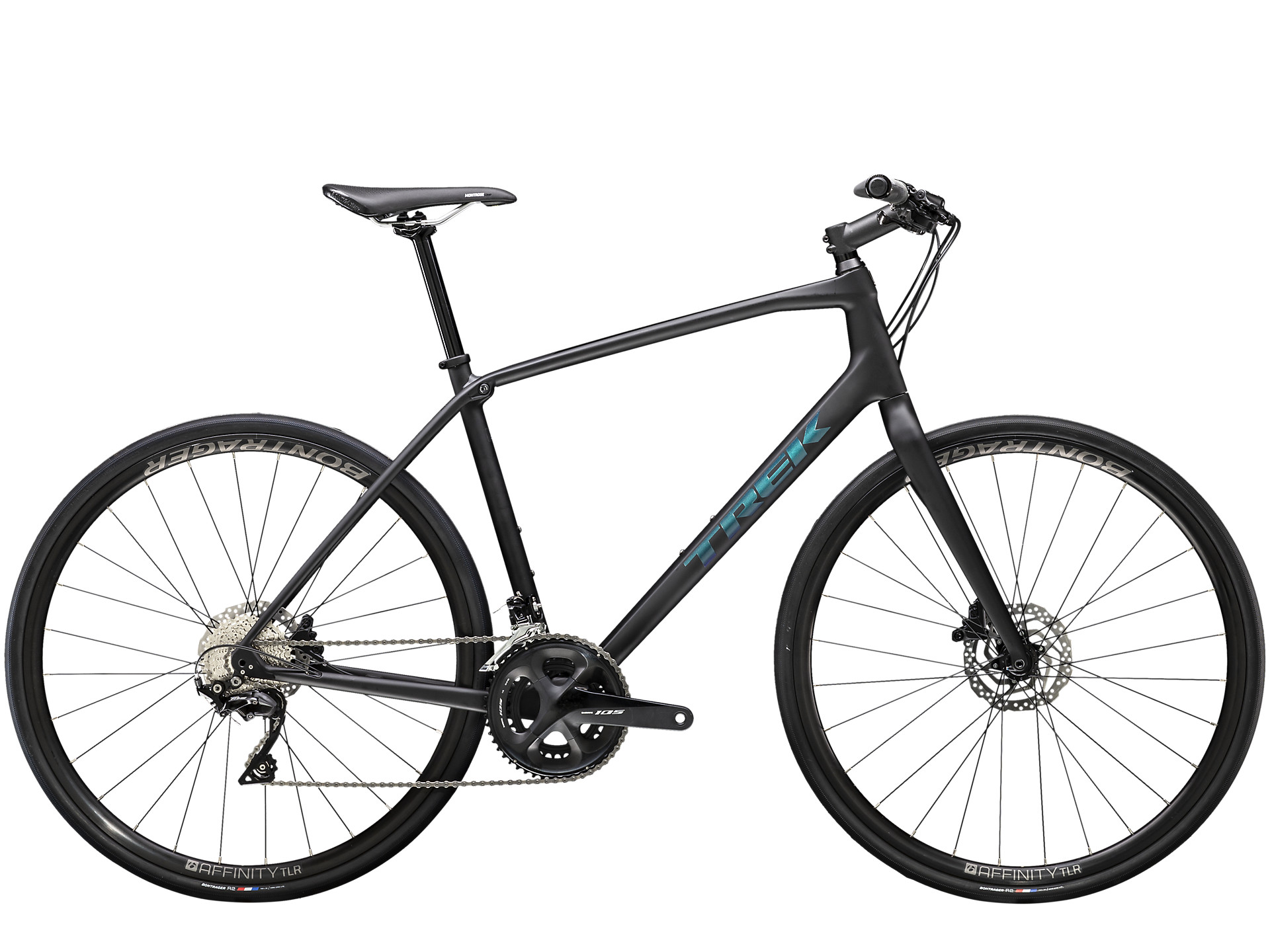
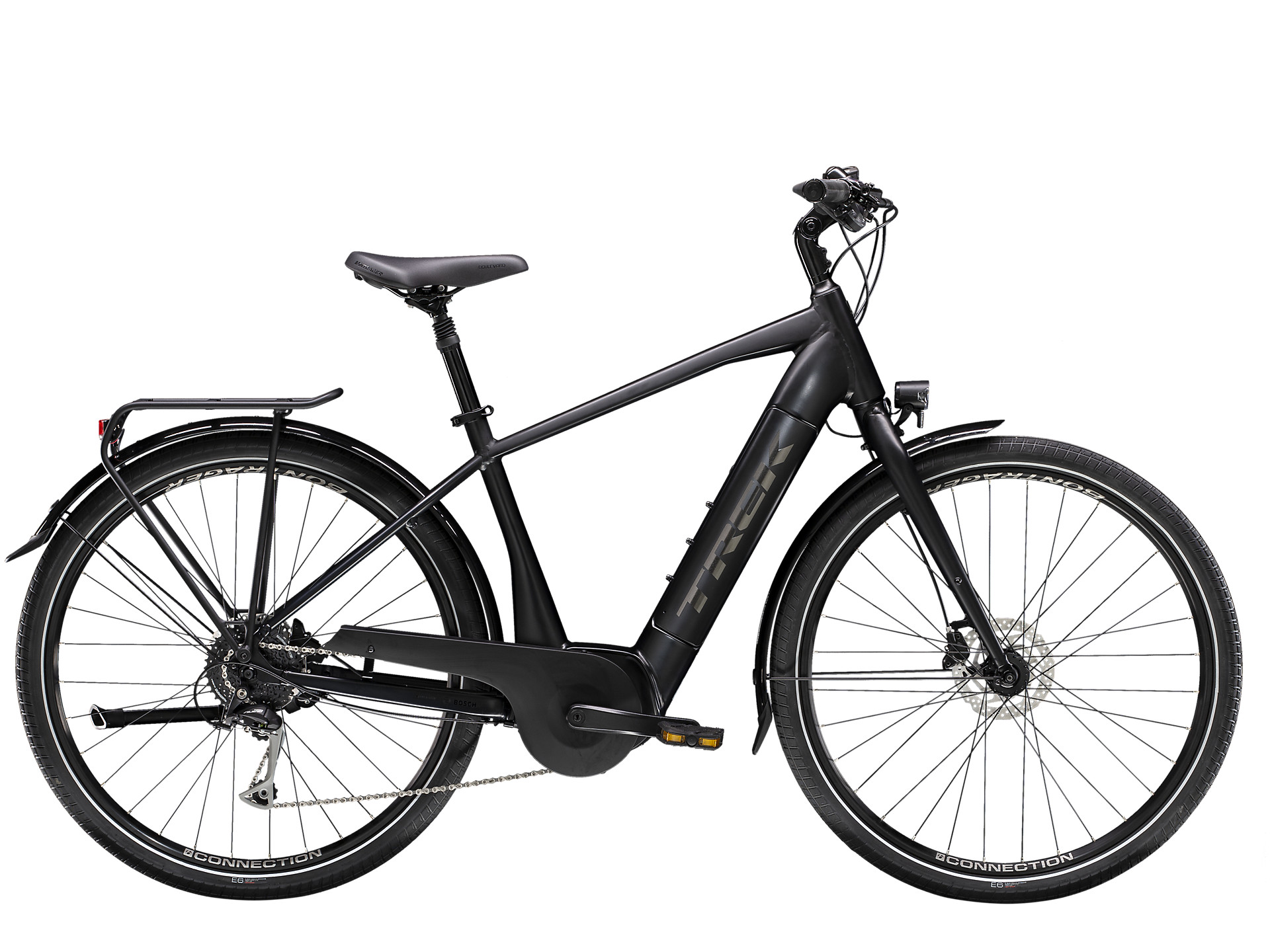


Got a 1989 Trek 1400 road bike, I love that thing, it was converted to STI brifters, and the bike itself even for today’s standards is so light!
I haven’t had the privilege to ride it, but the bike looks great! I’m sure it rides like the wind 🙂
Please doble check when you buy a Trek bike! For self experience, I bought one 10 month ago (all stock) and the chainring start touching the frame. I thought it was normal because I think they put correct components. But that was not the case they put a 36t and 26t xt crankset. My frame is completely damaged and I was worry because I do not want to get a accident. I went to the shop and they tell me was my fault they don’t give me any guaranty so that what I think this bike it’s worst do not buy repeat.
Oh man, sad to hear. What model was it?